.
17.09.2015
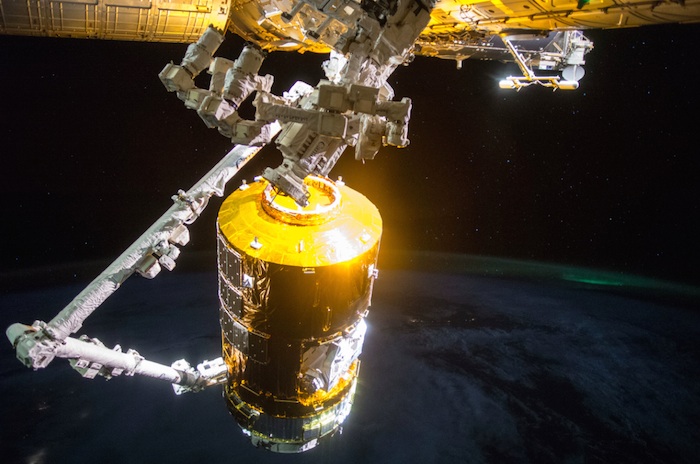
HTV-5-Cargo beim Eintreffen bei ISS
.
H-II Transfer Vehicle “KOUNOTORI5” (HTV5)
departure from the ISS and re-entry to the atmosphere
September 16, 2015 (JST)
National Research and Development Agency
Japan Aerospace Exploration Agency (JAXA)
Schedules of departure from the International Space Station (ISS) and of re-entry to the atmosphere for the H-II Transfer Vehicle “KOUNOTORI5” (HTV5) are determined as follows.
Departure from the ISS : September 29, 2015 / 0:20a.m. (Japanese Standard Time, JST)*
Re-entry to the atmosphere : September 30, 2015 / 5:31a.m. (JST)*
Quelle: JAXA
-
Update: 26.09.2015
.
NASA TV to Broadcast Cargo Ship Departure from Space Station
Five weeks after delivering approximately five tons of supplies and experiments to the International Space Station, an unpiloted Japanese cargo ship is scheduled to depart the station Monday, Sept. 28. NASA Television will provide live coverage of the departure beginning at 11 a.m. EDT.
Robotic flight controllers in the Mission Control Center at NASA’s Johnson Space Center in Houston will begin preparing the Japan Aerospace Exploration Agency’s (JAXA) H-II Transport Vehicle-5 (HTV-5) for unberthing from its port on the station’s Harmony module several hours before its release.
Expedition 45 Flight Engineer Kimiya Yui of JAXA, backed up by NASA Flight Engineer Kjell Lindgren, will command the station’s Canadarm2 robotic arm to release HTV-5, loaded with station trash at about 11:20 a.m. A few hours after its release, the cargo ship will fire its engines to begin a controlled deorbit and entry through Earth’s atmosphere, where it will burn up over the Pacific Ocean.
HTV-5 carried a variety of experiments and supplies to the space station, including the NanoRacks External Payload Platform, which can house multiple investigations in the open-space environment of the station, and the CALorimetric Electron Telescope investigation, an astrophysics mission that measures high energy particles to search for dark matter and the origin of cosmic rays.
Also aboard were various nanosatellites used for space research, known as CubeSats, including 14 Planet Labs Dove satellites, which will capture images of Earth for use in humanitarian, environmental and commercial applications. GomSpace GOMX-3 is a small satellite containing three radios. One radio receives beacons from commercial aircraft to improve air traffic monitoring, while the other two test reception and data downlink in the L-band, used by GPS satellites, and the X-band, used by the military and for weather monitoring, air traffic control and other uses.
HTV-5 also delivered materials to support the Twins Study, a compilation of 10 investigations designed to gain broader insights into the subtle effects of and changes that occur in the environment of space as compared to that of Earth by studying two individuals who have the same genetics, but are in different environments. NASA astronaut Scott Kelly is participating from the space station while his identical twin Mark Kelly, a retired astronaut, is participating on Earth. The study includes a suite of integrated human space physiology and cellular-level experiments.
Quelle: NASA
.
Update: 28.09.2015
.
Abdocking-Manöver von HTV-5 von ISS
.
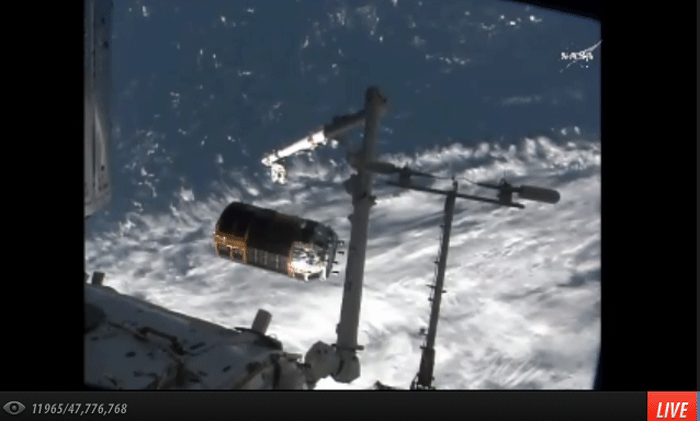
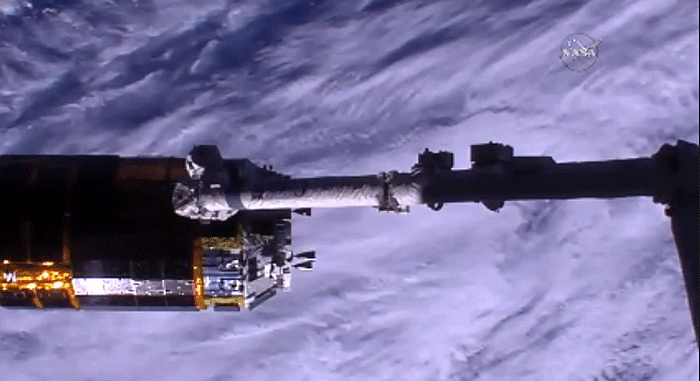
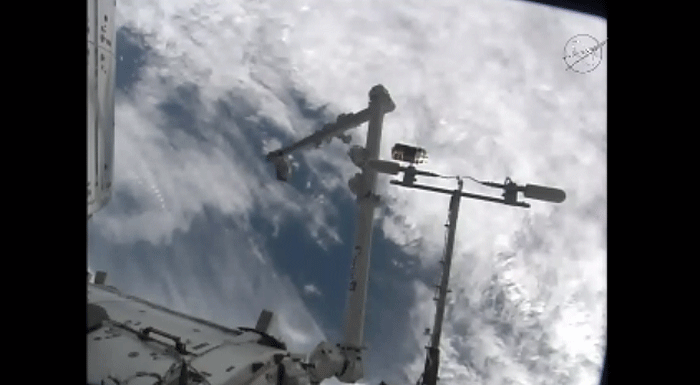
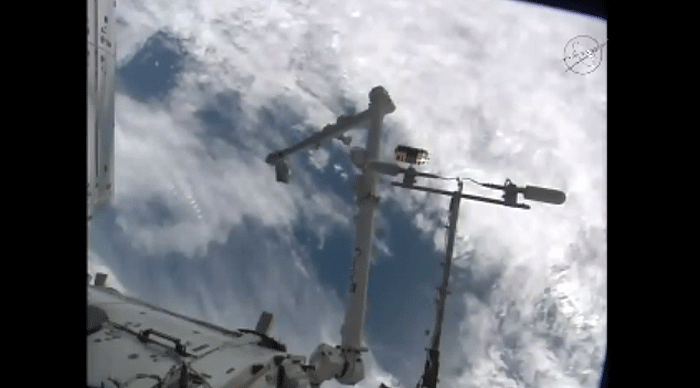
Quelle: NASA-TV
-
Update: 23.35
.
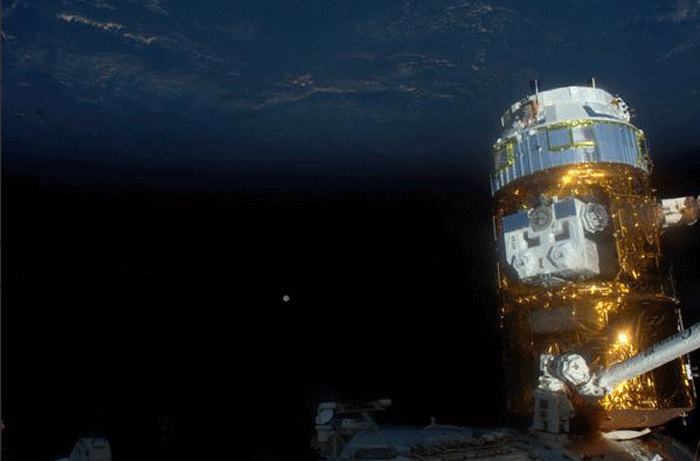
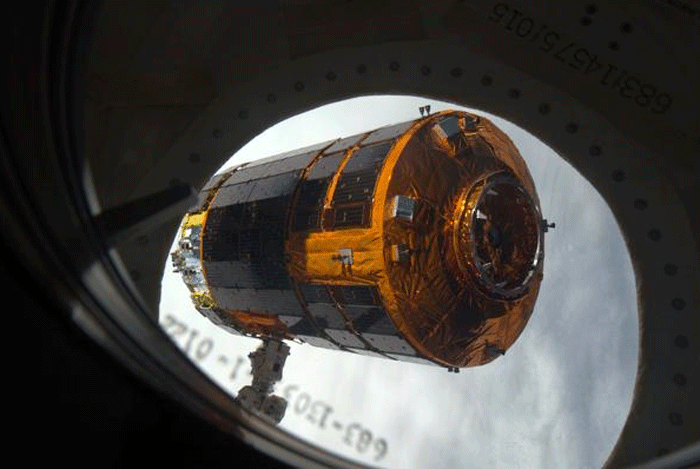
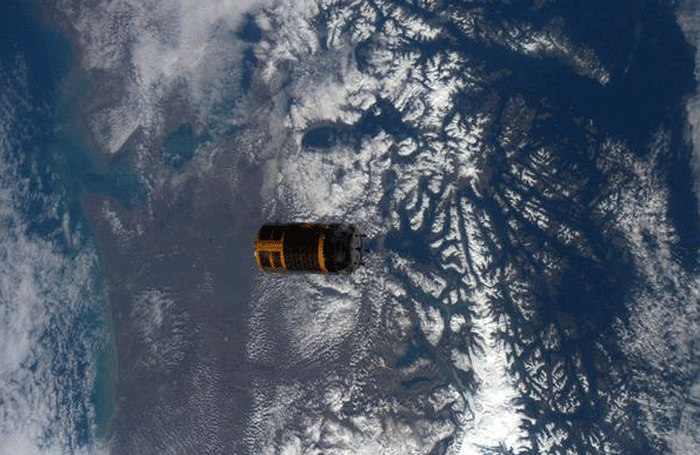
Quelle: 油井 亀美也 Kimiya.Yui / JAXA
-
Update: 1.10.2015
-
Successful re-entry of H-II Transfer Vehicle“KOUNOTORI5” (HTV5)September 30, 2015 (JST)National Research and Development AgencyJapan Aerospace Exploration Agency (JAXA)The H-II Transfer Vehicle “KOUNOTORI5” (HTV5) successfully re-entered the atmosphere after the third de-orbit maneuver at 5:08 a.m. on September 30, 2015 (Japanese Standard Time, JST).The “KOUNOTORI5” has successfully accomplished its main objective of shipping cargo to the International Space Station (ISS), and completed its 42-day mission.The estimated date/time for the re-entry and waterlanding are as follows (Japanese Standard Time):Estimated re-entry*: September 30, 2015 / 5:33 a.m.Estimated waterlanding: September 30, 2015 / 5:47 a.m. - 6:13 a.m.
* Altitude at 120 km
* Altitude at 120 km
.
KOUNOTORI5 (HTV5) reentered Earth's atmosphere at 5:33 a.m., September 30 (8:33 p.m., September 29 UTC).
KOUNOTORI5 successfully completed 42 days of cargo supply mission to the ISS.
Estimated Reentry* Time 5:33 a.m. September 30 (8:33 p.m., September 29 UTC)
Estimated Splashdown Time 5:47 - 6:13 a.m., September 30 (8:47 - 9:13 p.m., September 29 UTC)
* Altitude at 120km
For the KOUNOTORI’s capture and berthing, Astronaut Yui, in charge of the robotic arm operation, the Flight Control Team at the Tsukuba Space Center, and Astronaut Wakata, lead CAPCOM cooperated to make the operations successful. Such Japan’s technical strength and reliability received much attention from the world.
KOUNOTORI5 provided ISS crew with fresh fruits by making use of “late access” (express delivery) service, one of the features of the HTV. Late access service also enabled acceptance of an urgent delivery request for delivering replacement parts of the Water Recovery System, a dispensable system for the ISS operations.
KOUNOTORI5 also delivered new experimental devices as represented by the Mouse Habitat Unit (MHU), Electrostatic Levitation Furnace (ELF), and CALorimetric Electron Telescope (CALET). Utilization of the Kibo’s new experiment environment is hoped to yield a lot of results to us.
Quelle: JAXA
4590 Views
